Fabricator Roundtable: What to Know about Saw/Waterjet Technology
Stone World magazine talked with several fabricators to find out why they invested in saw/waterjet technology and what benefits they are reaping from having the machinery.
Stone World has carved a path as the leading news source for the international stone industry. Like the veins running through a slab of marble, over the years, the brand has flowed with stories that encompassed the entire journey of stone – from its humble origins to its magnificent applications.
Saw/waterjet technology has been on the rise, being used in more and more shops across the country. Stone World recently asked a group of fabricators who use the technology why they decided to purchase it to begin with, what operations they use it for and how they have seen the technology change. Participants in the discussion include: Jon Ryan of Inspiration Design Center in Minnesota; Karen Roe of NS Motif in Florida; and Geoffrey Gran of The Countertop Factory Midwest in Illinois.
What kind of saw/waterjet did you purchase?

Ryan: We purchased the Baca Robo sawjet, which was put into service in December of 2017.
Roe: Baca sawjet.
Gran: We currently have two Park Industries Fusion 4245s sawjets — both dual tables.
Why did you decide on a saw/waterjet in general?
Ryan: We saw the efficiency of being able to add the capabilities of the sawjet that would save us in material handling costs, and also being able to take the pressure/load off our CNC routers and more efficient nesting.
Roe: Material yield when nesting, time and labor, and maintenance.
Gran: Early on, we were committed to being a fully automated fabrication plant, and we needed the speed and accuracy of a sawjet to keep up with our growing demand. As we grow, we continually want to infuse technology into our business so that we can increase our customer base (market share), without always having to increase headcount. This makes us more reliable and more profitable.
What do you see as the benefits of just a plain waterjet versus a sawjet?
Ryan: Having a dual-capabilities machine is more efficient in the shop. It allows for tighter nesting — equaling higher material yield. Also, there is less material handling. They are more efficient, less opportunities for breakage due to handling the material, you save footprint in the shop, a saw blade is more efficient to operate and will chew more material than a waterjet. In general, we strive to use the water jet less than 20% of the time due to operational efficiency relative to saw cuts and also cost of operation/maintenance. As a result, there really isn’t enough work in a typical day to necessitate a dedicated waterjet.
Roe: It speeds up the entire process. The saw does its first pass with all the straight cuts and the waterjet finishes everything. Faucet hole and sink hole cut outs are done on our machine, as well to save on sink-hole bits. At $85 a pop, this is a huge savings.
Gran: Since we are a large production facility, we need to ensure we fabricate a certain amount of production per shift to keep up with current demand and future sales. While a waterjet is great for accuracy, the sawjet is faster. The sawjet combines the accuracy and nesting capabilities of a waterjet with the speed of a saw blade for faster cutting times since 80% of our cuts are straight (using the blade versus the waterjet).
What type of work do you use your saw/waterjet for?
Ryan: We use it for vanity cutouts, radius and arc cuts, connecting saw cuts, drop-in pre-cuts and sintered material seems to cut cleaner and more efficient on waterjets.
Roe: We use it for all cutting on the slab. It cuts each slab with all cut outs and faucet holes in 20 to 30 minutes, depending. In my opinion, the sawjet should be used for faster cutting, leaving the mitering to a separate machine that is specific for that. One, it is a better miter and two it doesn’t slow your production.
Gran: Every single one of our jobs starts on our sawjet. We cut every piece to size, as well as completing all cut outs. We do not perform miter cuts on our sawjet because that is valuable time that we can be using to cut more jobs. We utilize the Baca Systems miter excel saw to cut all of our miters because it is fast and the quality of the cuts are phenomenal.
What features do you look for in a saw/waterjet?
Ryan: Reliability, up-time statistics and mechanical simplicity. How quickly and simply can we complete basic repairs and/or re-build. Consumable items cost and availability. Is there local distribution and what are the costs of the most common and frequent items?
Roe: Maintenance, service, dependability, precision, labor and material savings.
Gran: While acquisition price plays a role in every capital purchase, we really focused on several key factors: Reliability – since we produce 2,000 square feet per day, we need machines that are going to run at all times and perform every day. Customer Service – we understand that nothing is perfect and that we will have issues with our machinery. Buying equipment from a manufacturer that has world-class customer service, just like TCF, is a must. Capabilities: We need machinery that would interact with our different software like Moraware and SlabSmith. We also use software developed by Fifth Gear Technologies that helps improve the production processes within a countertop fabrication company. One such software is SPEEDdraw, which reduces the amount of time a field measurer is required to capture data at a jobsite and drastically reduces the CAD process by 90%, all the while eliminating some of the common errors that are made by fabricators all over the country. SPEEDdraw converts the dxf file from the digital measuring system to a final shop ticket, along with G-Code ready files in literally just a few minutes (compared to 45 to 60 minutes).
What technology changes have you seen in saw/waterjet in the past few years?
Ryan: Adding more axis of movement planes is increasing the applications where a waterjet can be used within the shop. Also, I’ve heard of new technology on the horizon where the current hydraulic systems are being replaced by servo motors, which are more efficient and do not require the frequent re-builds that the current systems require.
Roe: I’ve seen some products trying to implement the miter on a machine. Again, my belief is it should be used to increase production speed and savings. Larger robots in place of smaller ones, which is not necessary, in fact the larger ones are not as fast and do not have as good of a reach.
Gran: As with anything, technology is ever changing. We are seeing larger-format tables, faster traverse times, bigger intensifier pumps which can cut faster, and of course, robotic technologies.
Anything else about the technology you want to mention?
Ryan: Waterjet and sawjets are like any other piece of equipment in your shop. You must be keenly aware of the strengths and shortfalls, so that you’re not deploying resources in an inefficient manner
Gran: In order for fabricators to continue to thrive and grow in this market, we must always be integrating technology into our businesses and processes. Change is not always easy, but running your business “because that is the way we have always done it” is a potential recipe for disaster if other competitors in the market are infusing technology into their processes.
This content is a feature from the Stone World.

